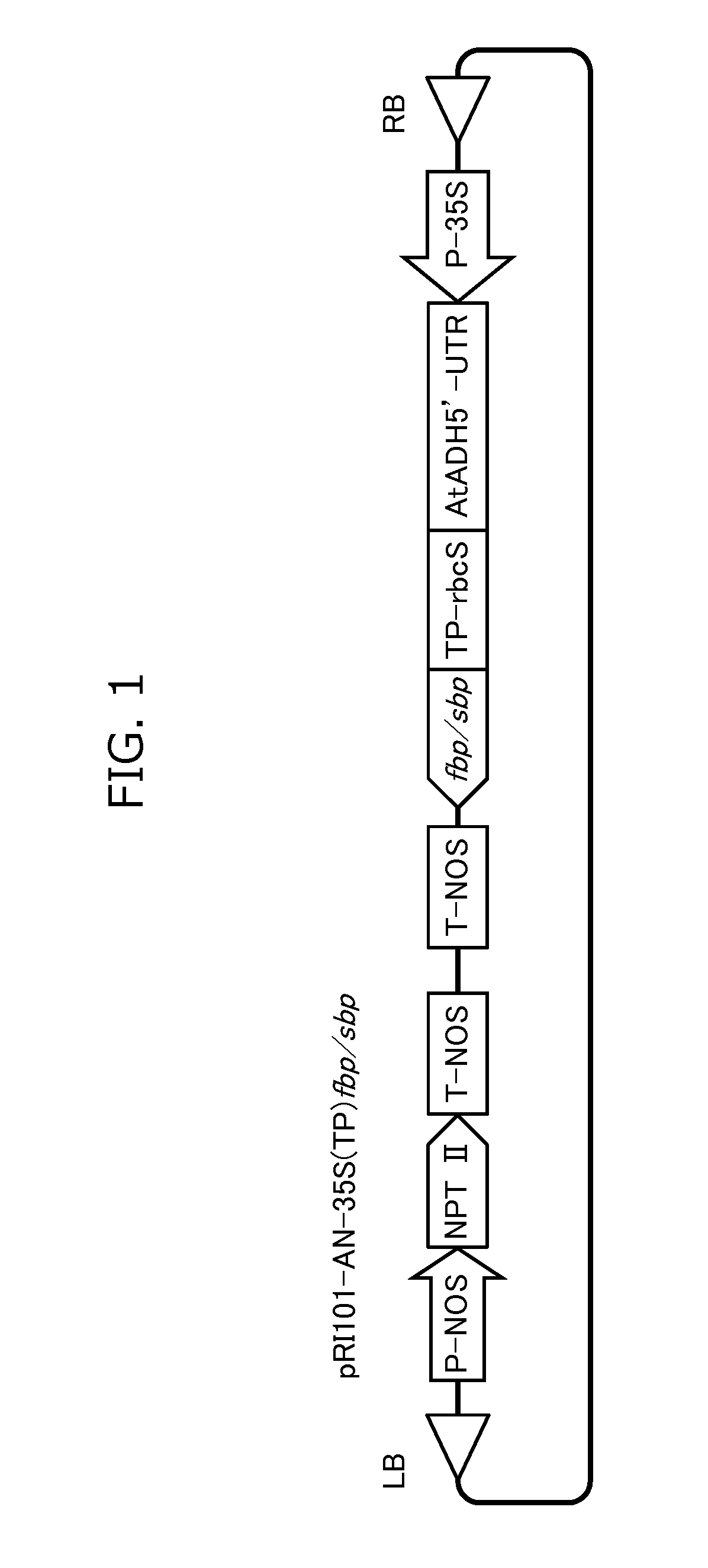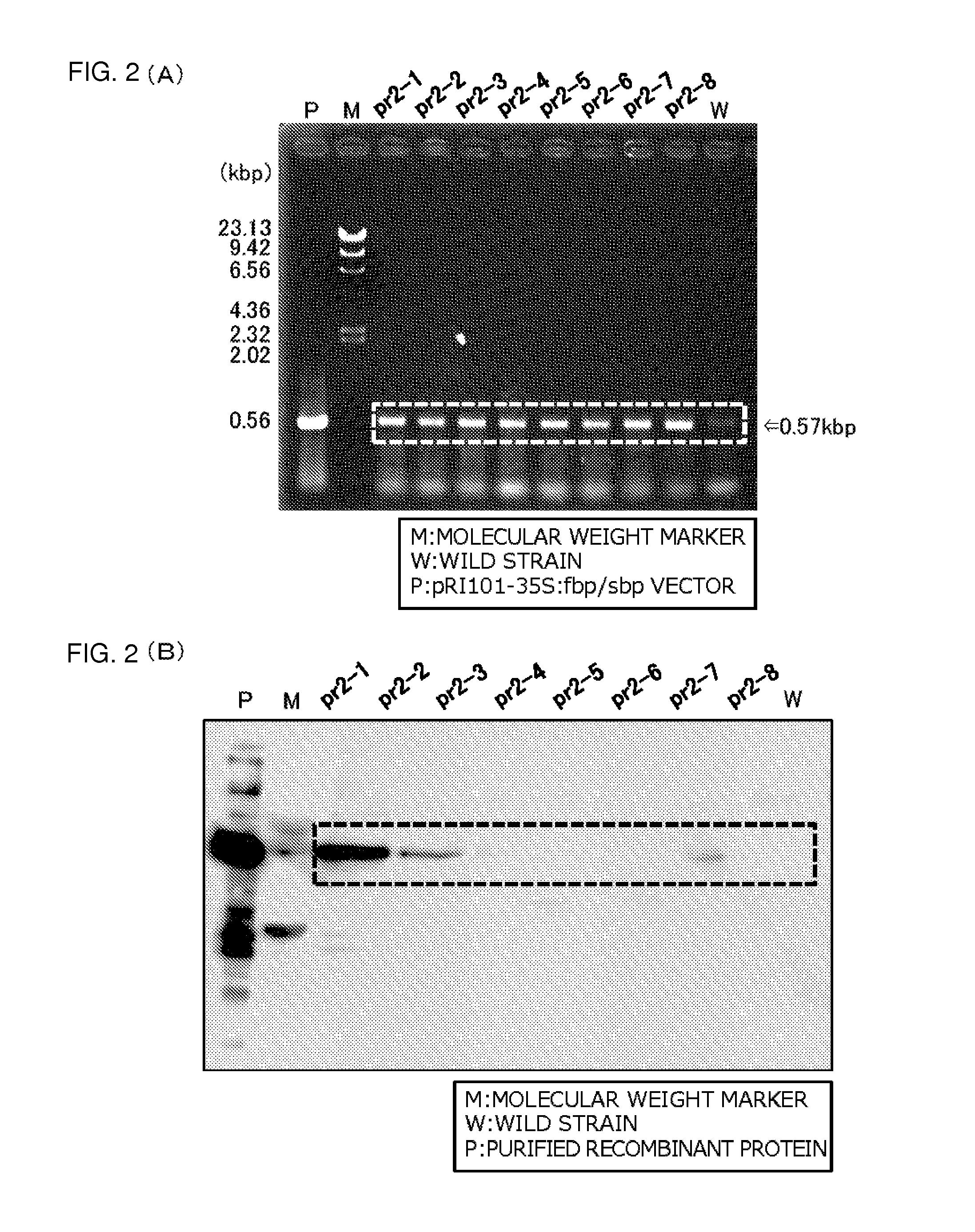Method for introducing gene to euglena, and transformant therefrom
- Summary
- Abstract
- Description
- Claims
- Application Information
AI Technical Summary
Benefits of technology
Problems solved by technology
Method used
Image
Examples
example 1
Gene Introduction into Euglena
[0122]Gene introduction into Euglena was performed by the method described above in the description of the embodiment.
[0123]First, preculture of Euglena was performed.
[0124]Euglena was cultured for five days in a Koren-Hutner culture medium (hereinafter referred to as a “KH medium”, arginine hydrochloride: 0.5 g / L, aspartic acid: 0.3 g / L, glucose: 12 g / L, glutamic acid: 4 g / L, glycine: 0.3 g / L, histidine hydrochloride: 0.05 g / L, malic acid: 6.5 g / L, citric acid 3Na: 0.5 g / L, succinic acid 2Na: 0.1 g / L, (NH4)2SO4: 0.5 g / L, NH4HCO3: 0.25 g / L, KH2PO4: 0.25 g / L, MgCO3: 0.6 g / L, CaCO3: 0.12 g / L, EDTA-Na2: 50 mg / L, FeSO4(NH4)2SO4.6H2O: 50 mg / L, MnSO4.H2O: 18 mg / L, ZnSO4.7H2O: 25 mg / L, (NH4)6Mo7O24.4H2O: 4 mg / L, CuSO4: 1.2 mg / L, NH4VO3: 0.5 mg / L, CoSO4.7H2O: 0.5 mg / L, H3BO3: 0.6 mg / L, NiSO4.6H2O: 0.5 mg / L, vitamin B1: 2.5 mg / L, vitamin B12: 0.005 mg / L (pH3.5)) under the conditions of continuous irradiation, or for four days in the KH medium under the conditio...
example 2
Comparison of Growth Between Transformed Strain and Wild Strain
[0133]Gene introduction with respect to Euglena was performed by the method described above as to the embodiments.
[0134]Conditions for preculture of Euglena were set to be identical to those in Example 1 except for the conditions of continuous irradiation for five days.
[0135]As the linear gene fragment, two types of linear gene fragments were used, which are a binary vector pBI121-35S for plants (produced by Takara Bio Inc.), and the binary vector pRI101-35S, which was used in Example 1 as well. A gene that encodes a protein having FBPase / SBPase activities (fbp / sbp, a gene including a base sequence represented by SEQ ID NO. 1 cloned by the inventors of the present invention) was inserted into multicloning sites of these binary vectors, while a chloroplast transit peptide rbcS-TP (acquired from Mr. Sugita in Nagoya University) was inserted in the upstream of the translation start sites thereof, whereby a vector pBI121-35S...
example 3
Culture after Gene Introduction
[0151]After gene introduction was carried out in Example 2, the wild strain and the transformed strain (EpFS-1) of Example 2 were subcultured, with the same numbers of cells, in a Cramer-Myers medium (hereinafter referred to as a “CM medium”, (NH4)2HPO4: 1.0 g / L, KH2PO4: 1.0 g / L, MgSO4.7H2O: 0.2 g / L, CaCl2.2H2O: 0.02 g / L, citric acid 3Na.2H2O: 0.8 g / L, Fe2(SO2)3.7H2O: 3 mg / L, MnCl2.4H2O: 1.8 mg / L, CoSO4.7H2O: 1.5 mg / L, ZnSO4.7H2O: 0.4 mg / L, Na2MoO4.2H2O: 0.2 mg / L, CuSO4.5H2O: 0.02 g / L, thiamine hydrochloride (vitamin B1): 0.1 mg / L, cyanocobalamin (vitamin B12): 0.0005 mg / L, (pH3.5)).
[0152]These culture solutions were sampled with time, and the numbers of cells thereof were counted. Further, using an oxygen electrode, photosynthetic activity and respiratory activity were measured.
[0153]As illustrated in FIG. 7, at day 13 from the start of culture, the cell concentration of the transformed strain (EpFS-1) reached 1.4 times that of the wild strain.
[0154]F...
PUM
| Property | Measurement | Unit |
|---|---|---|
| Diameter | aaaaa | aaaaa |
| Size | aaaaa | aaaaa |
Abstract
Description
Claims
Application Information
 Login to View More
Login to View More - R&D
- Intellectual Property
- Life Sciences
- Materials
- Tech Scout
- Unparalleled Data Quality
- Higher Quality Content
- 60% Fewer Hallucinations
Browse by: Latest US Patents, China's latest patents, Technical Efficacy Thesaurus, Application Domain, Technology Topic, Popular Technical Reports.
© 2025 PatSnap. All rights reserved.Legal|Privacy policy|Modern Slavery Act Transparency Statement|Sitemap|About US| Contact US: help@patsnap.com



